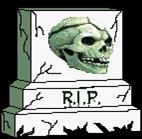 The Three domain Hypothesis is dead. It passed away peaceably sometime in the past ten years. Most people didn't notice.
The Three domain Hypothesis is dead. It passed away peaceably sometime in the past ten years. Most people didn't notice.Last year a wake was held. Friends and enemies of the Three Domain Hypothesis were invited. Many gave eulogies and these were published in a book called Microbial Phylogeny and Evolution: Concepts and Controversies. This is a collection of papers by leading scientists in the field. It's edited by Jan Sapp, a Professor of Biology at York University here in Toronto. I've listed the most interesting articles at the bottom of the page and I'll stick to comments on these articles for now.
Surprisingly, some of the guests at the wake did not know the hypothesis had been falsified. They thought the corpse was still breathing!
The Three Domain Hypothesis refers to the proposal by Carl Woese that; (1) archaebacteria form a monophyletic group, (2) this clade is sufficiently different from all other prokaryotes to deserve elevation to a separate Domain called Archaea (the other two Domains are Bacteria and Eukarya), (3) eukaryotes are more closely related to archaebacteria than to other prokaryotes, and (4) the root of the universal tree of life lies in the branch leading to Bacteria.
The "standard" universal tree of life is based on the Three Domain Hypothesis. It is mostly derived from sequences of the small ribosomal RNA subunit (SSU).
 In recent years, all four of the major claims of the Three Domain Hypothesis have been challenged. Some would say that two have been falsified. Furthermore, there is growing recognition that SSU-based trees are not as reliable as we once thought. Surprisingly, this skepticism among evolutionary biologists has not reached the ear of the average scientist who continues to act as though the Three Domain Hypothesis is a done deal.
In recent years, all four of the major claims of the Three Domain Hypothesis have been challenged. Some would say that two have been falsified. Furthermore, there is growing recognition that SSU-based trees are not as reliable as we once thought. Surprisingly, this skepticism among evolutionary biologists has not reached the ear of the average scientist who continues to act as though the Three Domain Hypothesis is a done deal.The literature is large, varied, and controversial. I've been following it for twenty years and it's not possible to write a short note covering all the bases. Instead, I'll concentrate on reviewing a few of the papers in the book.
Norman Pace The Large-Scale Structure of the Tree of Life.
Woflgang Ludwig and Karl-Heinz Schleifer The Molecular Phylogeny of Bacteria Based on Conserved Genes.
Carl Woese Evolving Biological Organization.
W. Ford Doolittle If the Tree of Life Fell, Would it Make a Sound?.
William Martin Woe Is the Tree of Life.
Radhey Gupta Molecular Sequences and the Early History of Life.
C. G. Kurland Paradigm Lost.
(4) the root of the universal tree of life lies in the branch leading to Bacteria.
ReplyDeleteThat's absurd if you think about it - the root lies in a branch?
Larry, is there a good, reliable summary of the current state of play, say in a Trends journal? It's hard for us nonscientists to follow this debate, and I'd like to be clear on the actual present conclusions.
ReplyDeleteI'm going to try and provide a summary of the current state of play. but it will take several postings. As far as I know there isn't a short concise summary that really gets to the heart of the atter.
ReplyDeleteCould you give references in a way that they can be checked, ie the journal volume date pages? I cannot find your titles on Web of Science
ReplyDelete